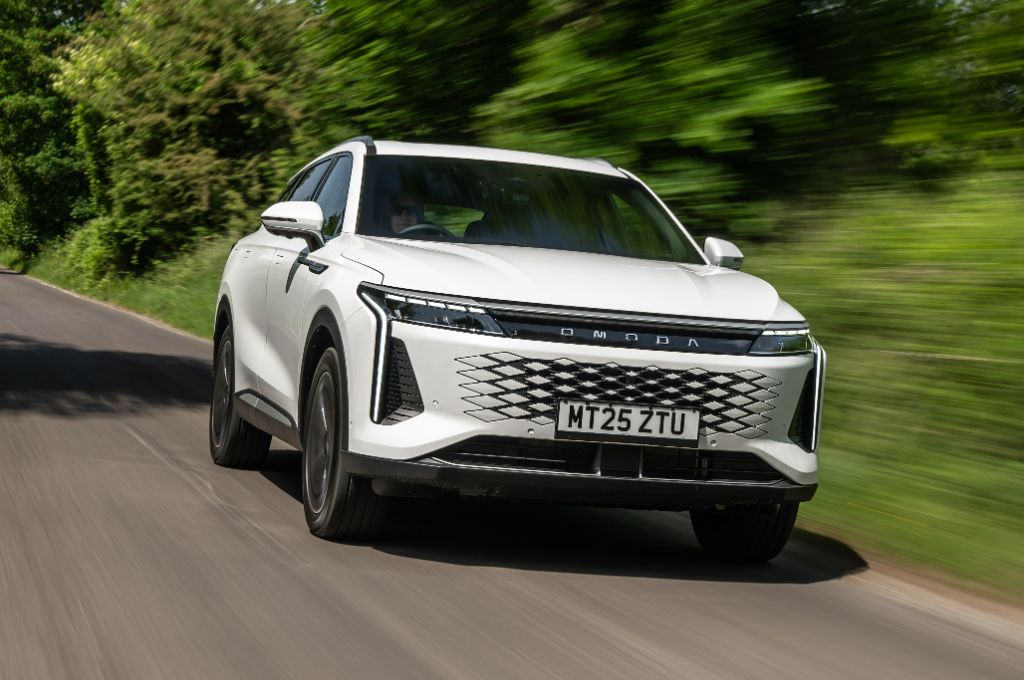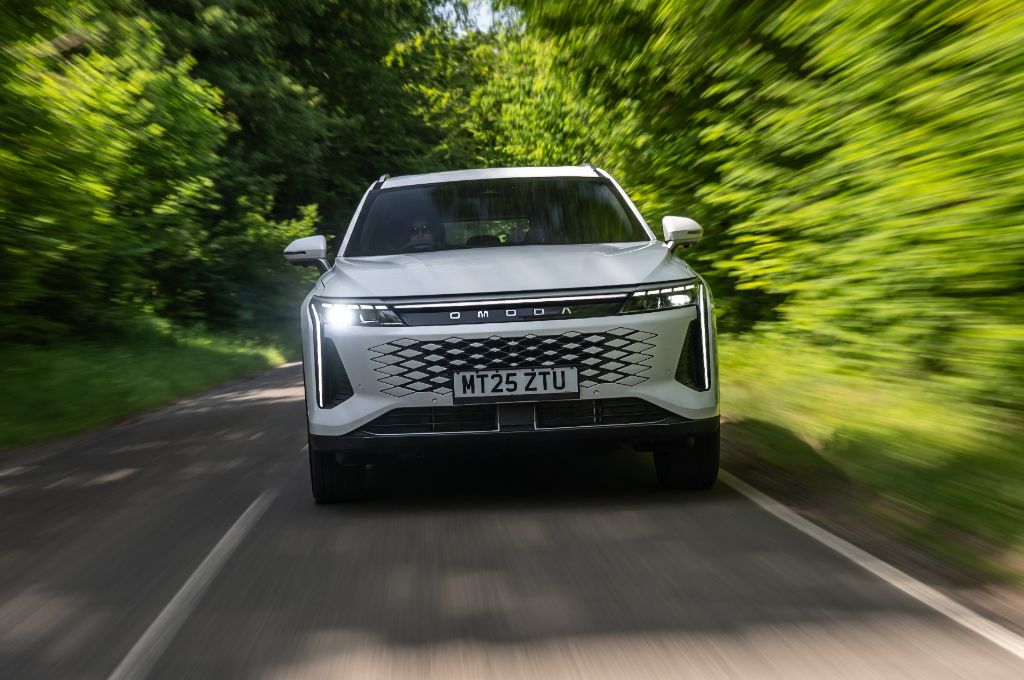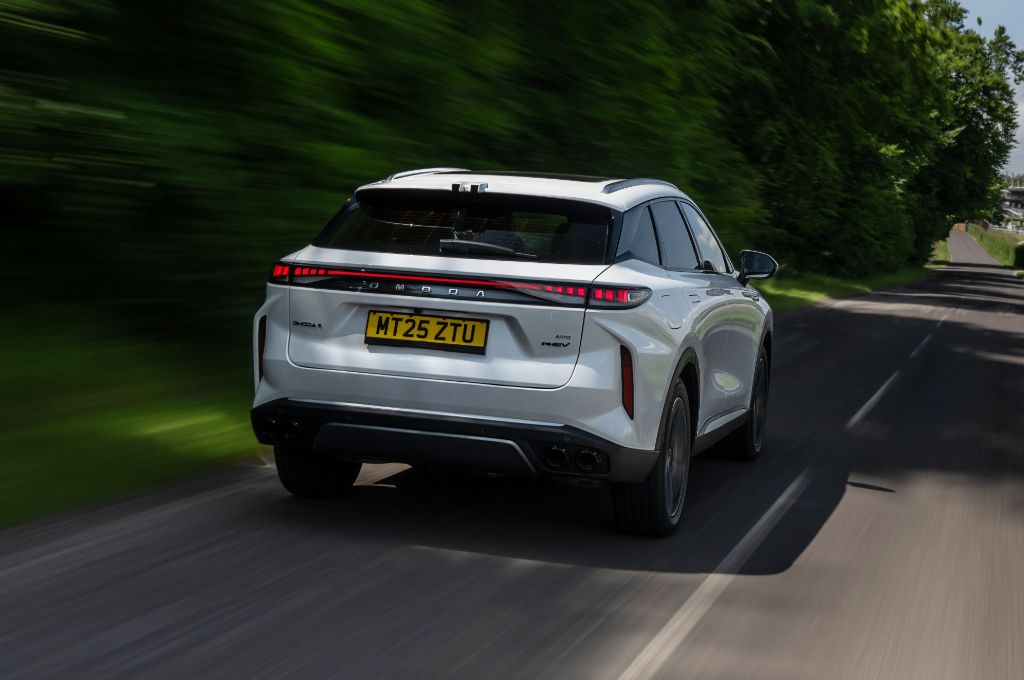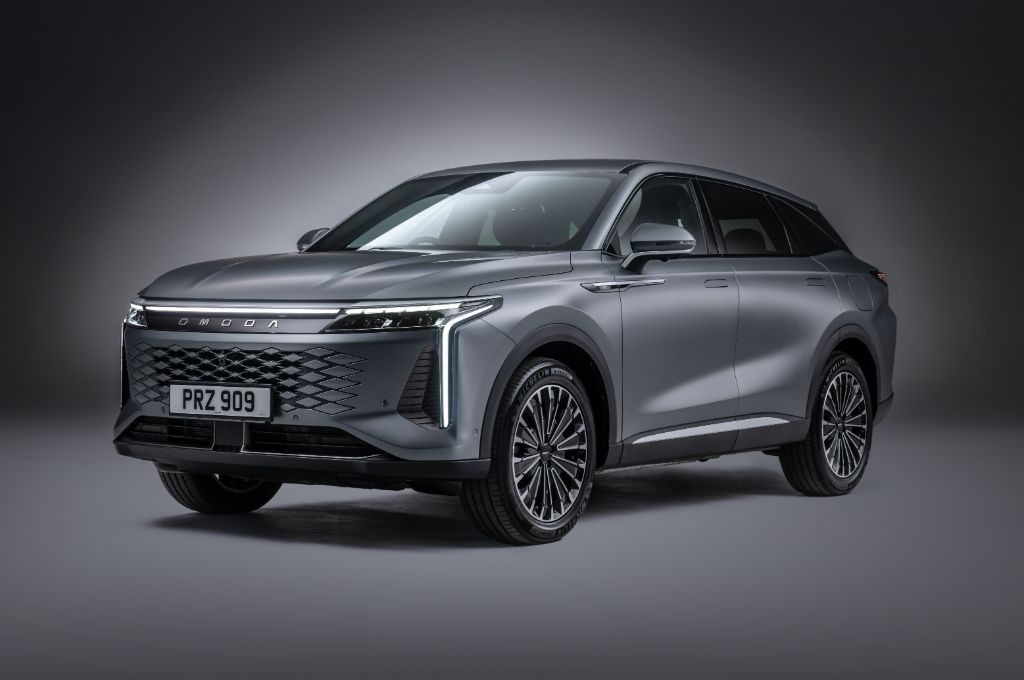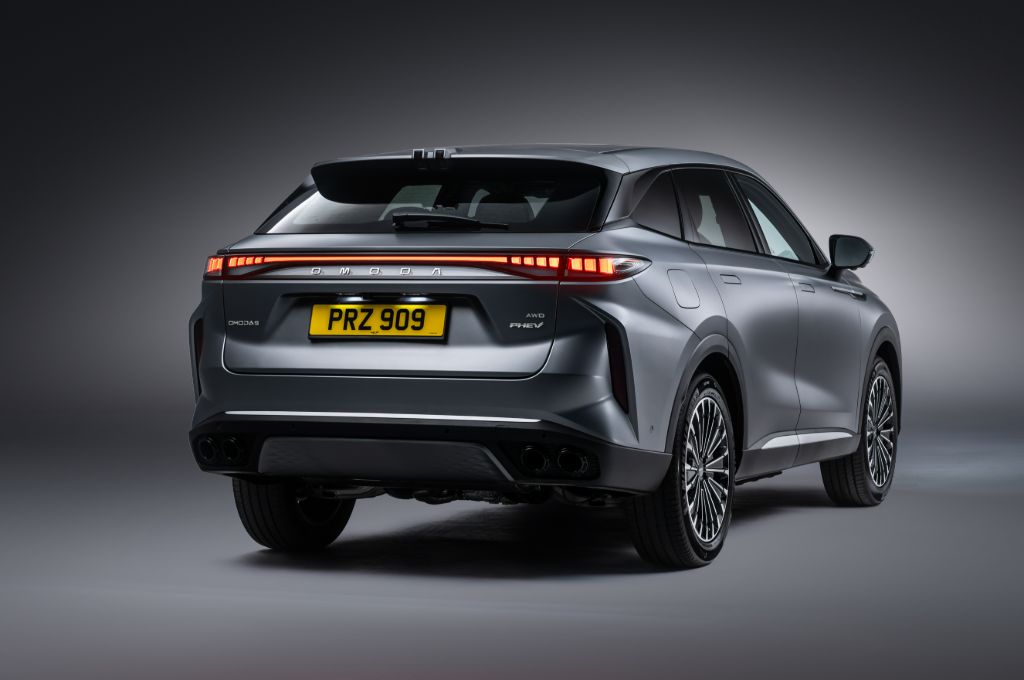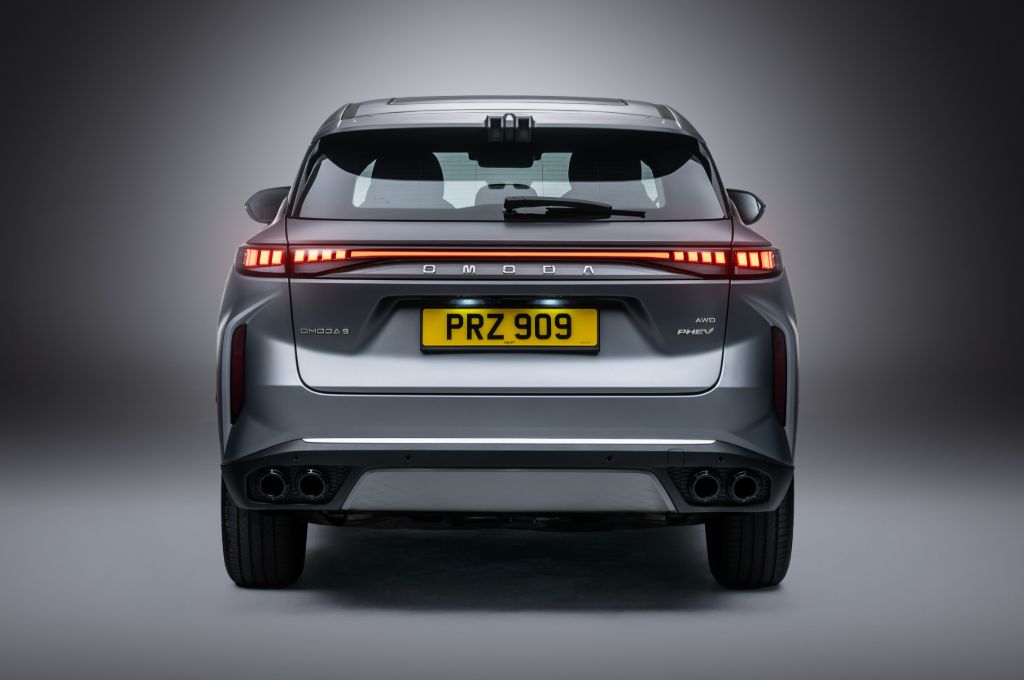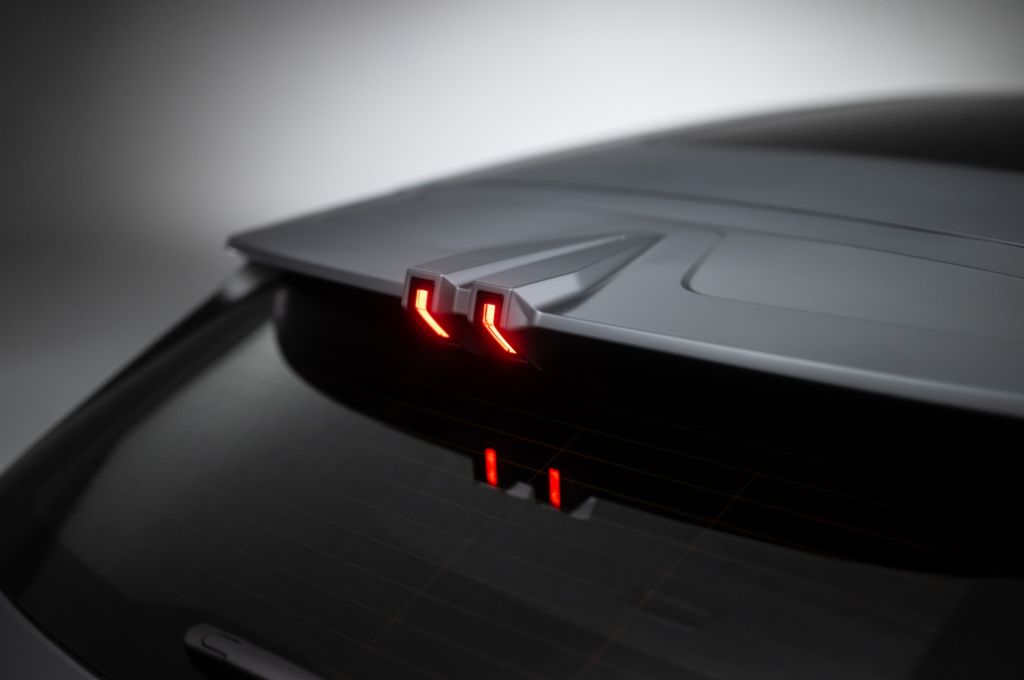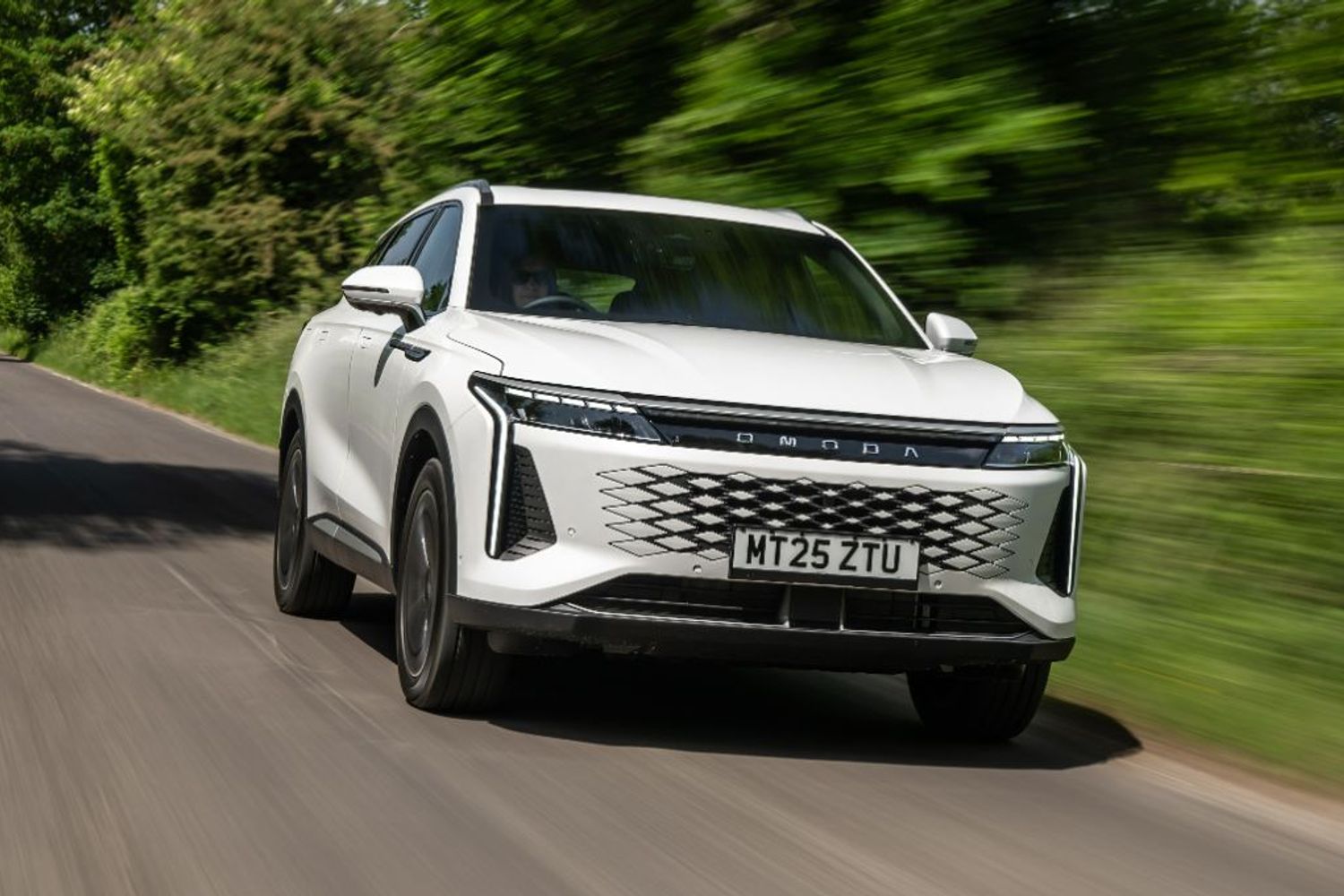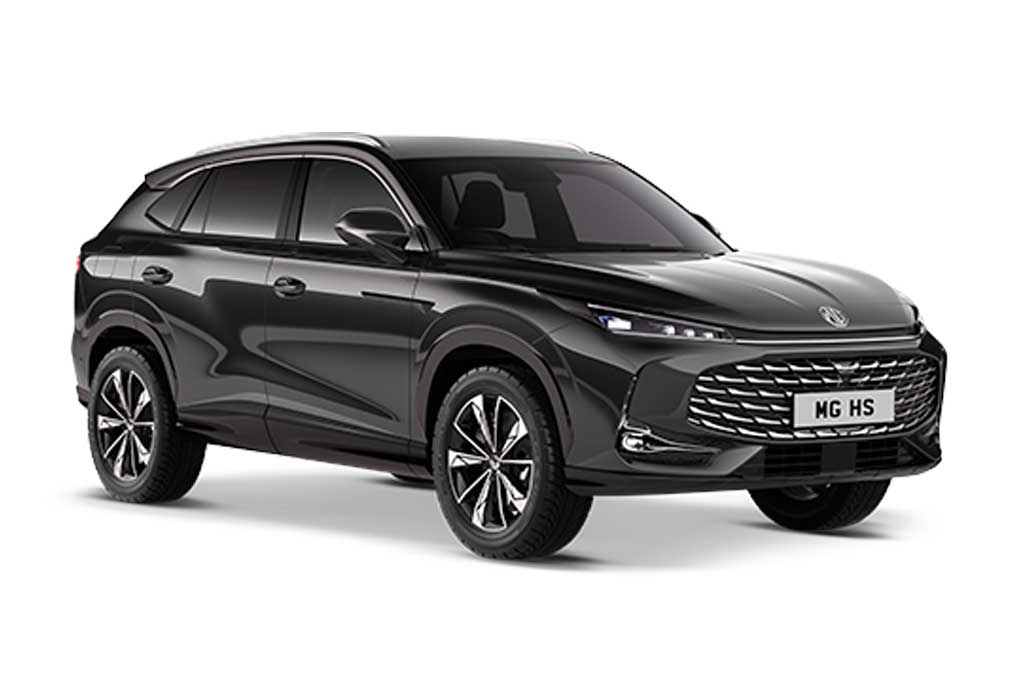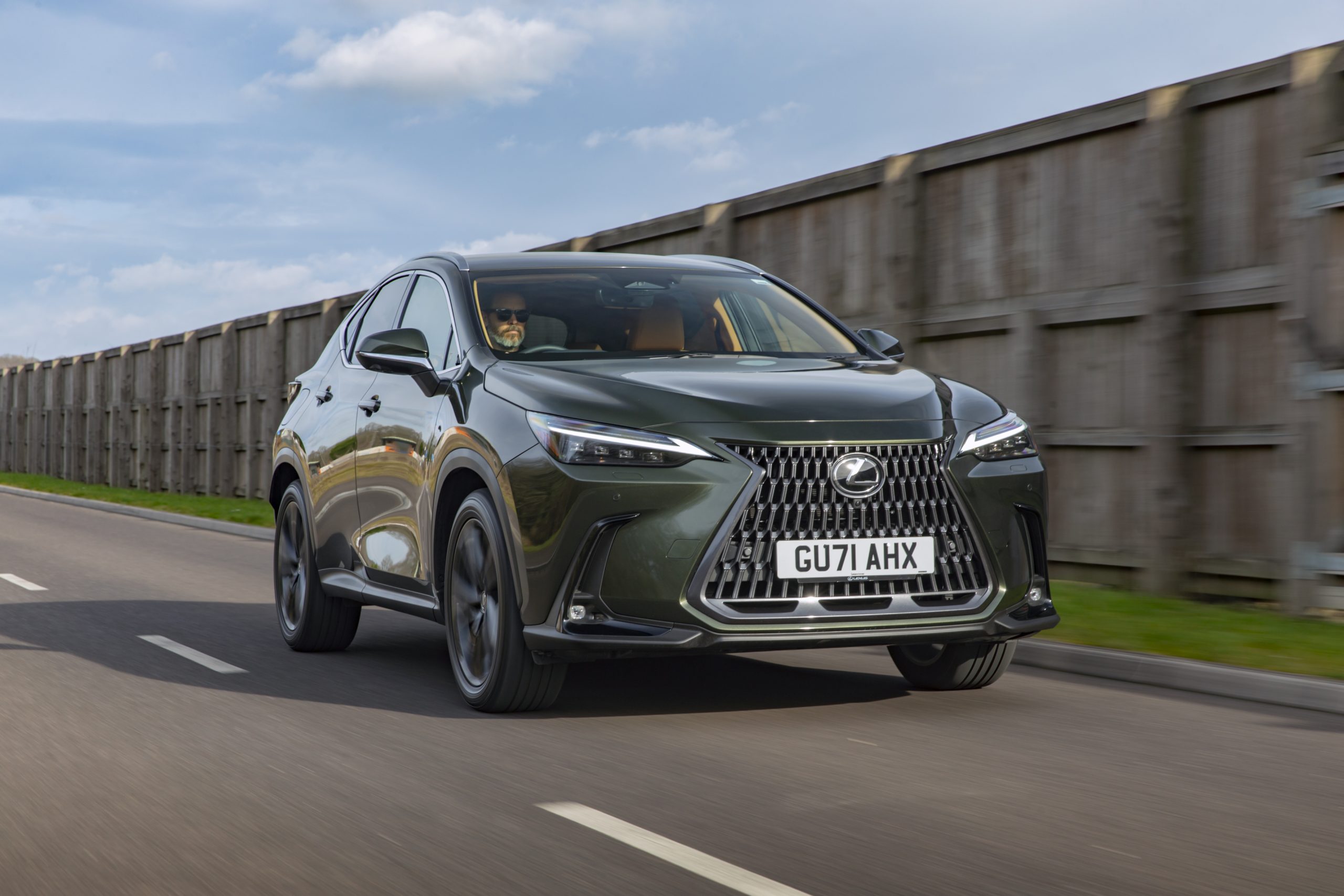Introduction and model history
The Omoda 9 SHS is the latest model to come from Omoda; a new brand that was launched in 2022 alongside its more outdoor-oriented sister brand, Jaecoo, by Chinese car giant, Chery.
The 9 is only offered in one trim complete with all the equipment you could possibly want, and it’s only fitted with the clever new ‘Super Hybrid System’ SHS plug-in hybrid powertrain. This allows the 1.5-litre turbocharged petrol motor to function as a generator to charge the 34.5kWh battery, or it can drive the wheels directly to help deliver a combined total driving range of as much as 700 miles. With an official pure electric range of 93 miles and 70kW DC rapid charging as standard, you probably won’t need to trouble the petrol engine very often, anyway!
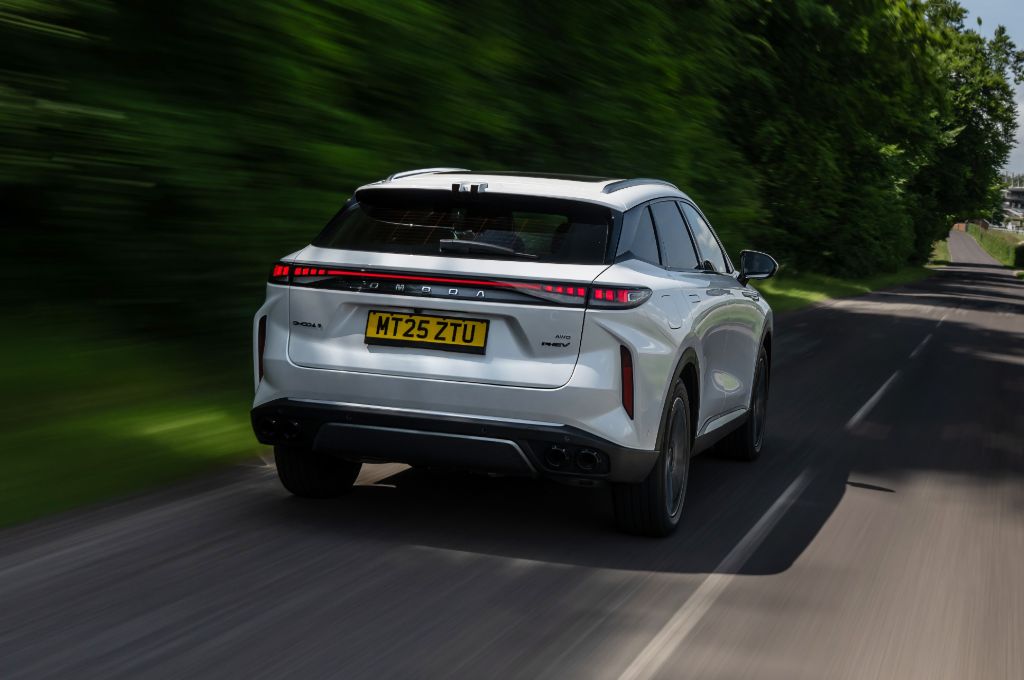
While the 9 is very much a premium proposition, and Omoda will tell you that it’s competing with cars like the Range Rover Velar and Volvo XC60, it can’t be ignored that it is also a very similar price to excellent and similarly spacious plug-in hybrid SUVs, including the Kia Sportage, Hyundai Tucson, Peugeot 5008, Skoda Kodiaq and more.
Range, battery and charging
I’ve already mentioned the 93 mile range, haven’t I?! I know, I got a bit excited about that, but I do think that long range plug-in hybrids like this could be a good option for a lot of motorists – and maybe a good stepping stone to a full EV in the future.
Anyway, it is one of the longest electric ranges of any plug-in hybrid vehicle, right now, and on our fairly sedate, summer test drive it proved impressively efficient and seemed to be on course to manage nearly 90 miles to a charge. I didn’t have time to do a proper full-to-empty real-world range test, and the weather conditions were pretty ideal, so expect that to be a best-case scenario. Winter electric real-world range on the Omoda 9 will most likely be closer to 70 miles.
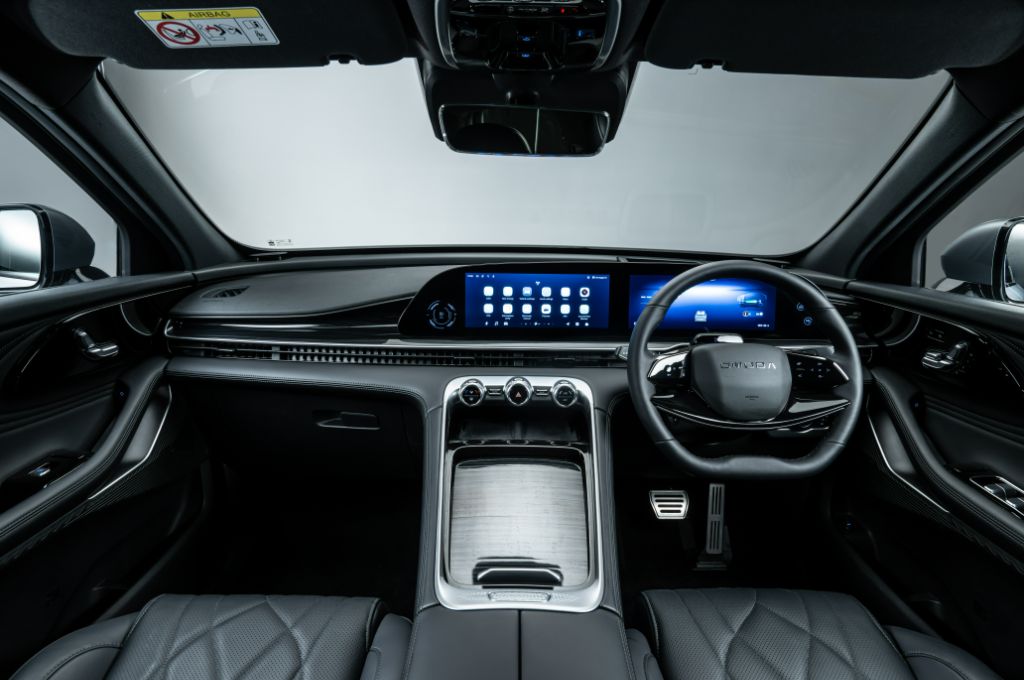
Rapid charging of 70kW is standard; just plug into a DC charger via the CCS socket on the car’s rear wing and you can have a 30-80% charge in around 25 minutes.
Omoda quotes that 30-80% charge time (rather than the 10-80% time that you’ll see in relation to many other PHEVs) because the 9’s powertrain actually won’t let the battery drop below about 20% charge, anyway. When the battery drops to that level, it fires up the petrol engine and the Omoda 9 starts to function just like a self-charging hybrid system that you find in Toyota and Lexus products, among others. So the electric motor will still kick in occasionally to improve efficiency, and then the petrol motor and brake regen’ will help to keep the battery topped up.
You also get vehicle-to-load (V2L) charging, which means that you can plug in an adaptor to the car’s charging socket and then power your electrical devices from the high voltage battery.
Speaking of the high voltage battery, the Omoda 9 uses a 34.46kWh lithium-iron phosphate (LFP) battery, which has a total capacity of 35.36kWh. It’s sourced from CATL, and uses new battery tech that provides more energy from a lower-weight battery. Nice! You can read all about the pros and cons of LFP batteries, right here.
Practicality and boot space
There’s tonnes of space in the Omoda 9, which – at just under 4.8 metres long - is a very similar size to the Skoda Kodiaq and Peugeot 5008. The standard, opening panoramic sunroof helps to give it all a light and airy feel, as well, but this is a big car and you notice how wide and roomy it feels whether you’re in the front or the back seats.
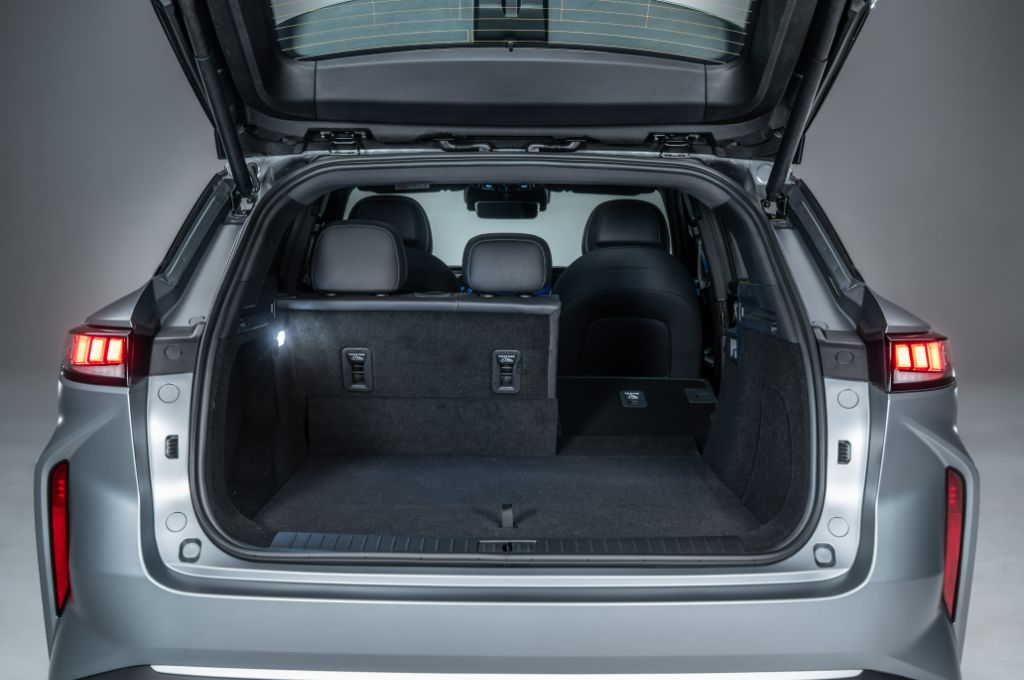
Those in the back get plenty of space, too, with particularly generous legroom and electrically reclining backrests. You can also adjust the front seat placement from the back seats, chauffeur-car style, plus there’s climate control as well as heated- and cooled seats for passengers in the back. It’s is all very swish, isn’t it?!
At 660-litres the boot is a very decent size, and bigger than most. But I was a bit disappointed that there’s barely any underfloor space, and the rear seats split in a 60/40 fashion and don’t slide. So, while it’s a big boot, it’s worth noting that the plug-in hybrid Skoda Kodiaq and Peugeot 5008 offer more boot space and versatility.
Interior, design/styling and technology
The interior of the Omoda 9 really is very smart. Perceived quality isn’t what you might want of a premium car claiming to be a rival to Range Rover, Volvo, Mercedes and the like, but it certainly feels classy. The leather feels lovely, the layout is pretty straightforward and pleasant, the combination of materials looks good – even if the shiny plastic cover over the cupholders in the centre console looks and feels a bit tacky. Gloss black finishes on the steering wheel also give a high-end appearance, but it’s not terribly practical as sunlight reflects on it and makes it hard to see the haptic buttons on the multifunction wheel.
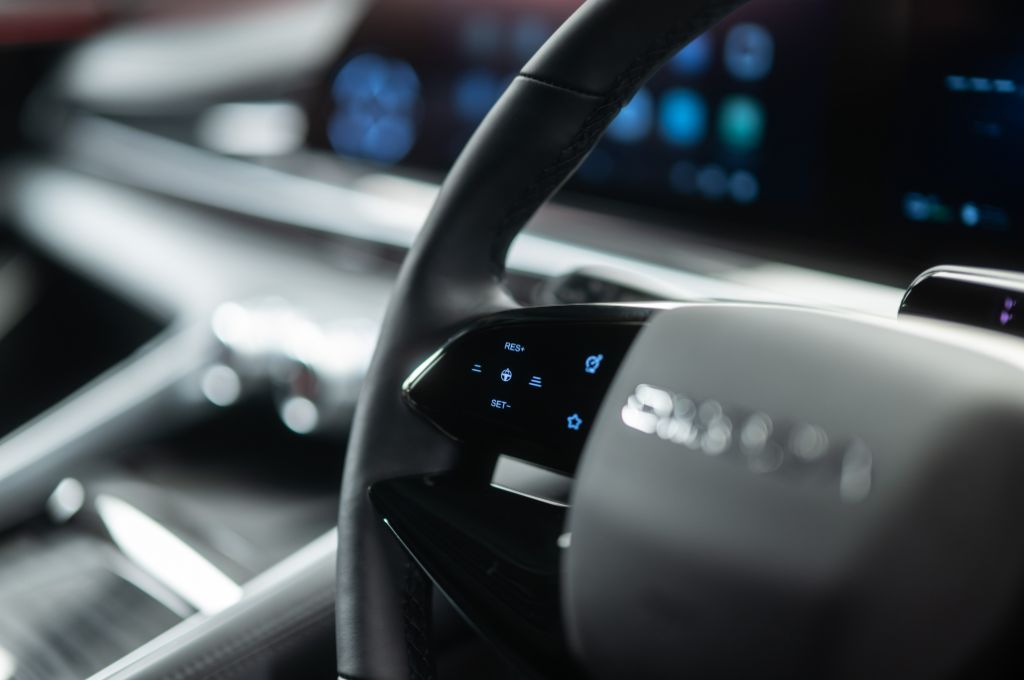
You get all the equipment you could possibly want, too. Electrically adjusted heated- and cooled seats, head-up display, wireless phone charging with a fan to keep your phone cool, adaptive ambient lighting... There are some optional paint options, including a matte silver finish, but everything else is standard on the Omoda 9.
Motors, performance and handling
The Omoda 9 is a very pleasant drive. It’s four-wheel drive, so you can confidently apply the full 443bhp and 516lb ft for the full rush of 0-62mph in 4.9 seconds. It does feel quick, too, especially if you go for a cheeky burst of acceleration in the mid-range as the powertrain picks up really keenly but still feels smooth.
The SHS plug-in hybrid powertrain fitted to the Omoda 9 gets a very clever automatic, three-speed automatic gearbox that’s dubbed the dedicated hybrid transmission (DHT). This means that the 1.5-litre, turbocharged petrol engine can drive the wheels directly when full performance is required. It’s more often asleep, though, or in use as a generator to top-up the battery – leaving the wheels to be driven by one- or both of the electric motors.
When that huge electric range starts to run low, and the engine needs to take the strain, the Omoda is clever enough that it’ll retain enough battery power to still boost efficiency – basically working like the self-charging hybrid system that you find in a Lexus RX.
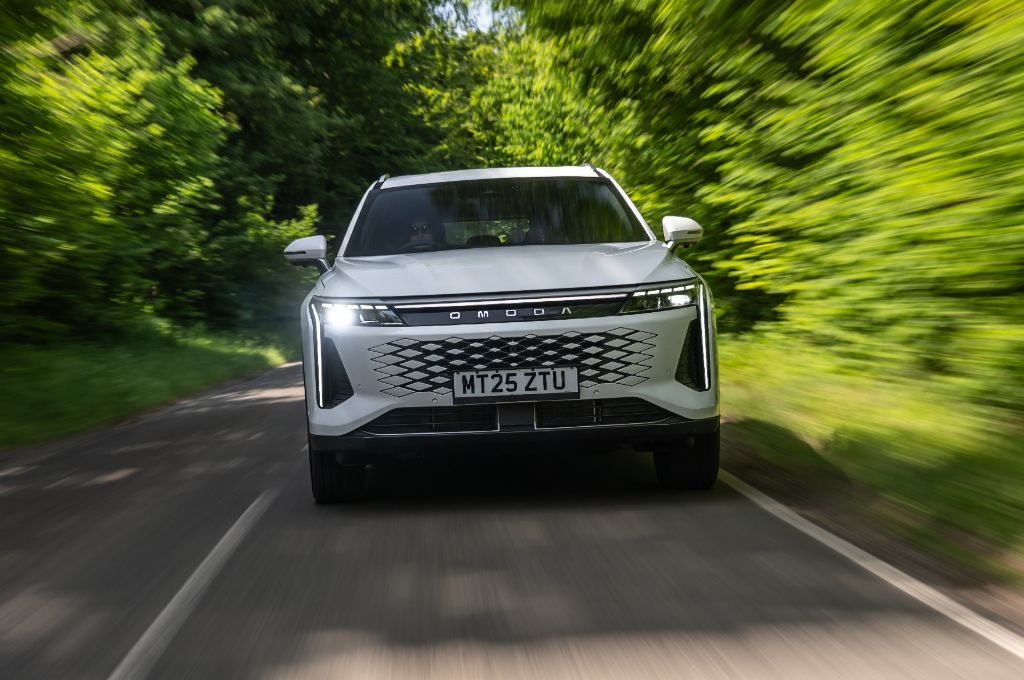
In short, even with the engine running the Omoda 9 drives very much like a pure electric car, with slick acceleration and very little noticeable shunt or hesitation when it switches modes. It’s quiet, too! The petrol engine is a barely audible background noise when it’s on, although you will notice the thrum when it’s charging the battery. There’s a bit of wind- and tyre noise, but nothing that’s going to bother you – especially if you make use of the 14-speaker Sony sound system.
Steering, suspension and even brake feel can be adjusted in the Omoda, either independently via the touchscreen or by toggling the drive mode rotary button to activate the pre-set drive modes. Even in Sport mode the steering is light but confident and feels more targeted towards being calm and easy-going rather than sporty – which is fine by us given that the Omoda 9 isn’t a sports SUV, anyway. It’s a shame that the ride comfort on the Omoda is a bit wayward; rather firm and unsettled in Sport mode, and wafty but still a bit reactive over bad surfaces in the more comfort-oriented settings.
Generally, the Omoda 9 is a calm, rather serene place to cover miles, even if ride comfort could be better.
Running costs and pricing
List price is seriously competitive next to the premium rivals we’ve mentioned, which are typically some £10,000 more expensive and have far less standard equipment and lower electric-only range. So you can really see the appeal of the Omoda! But at £585 per month over a four year PCP deal, after a £5,000 deposit, it’s not all that cheap on monthly costs for retail buyers. And those less prestige brands like Skoda, VW, Hyundai and Kia can all provide a similarly spacious plug-in hybrid SUV for a similar brochure price, and often for a bit less on PCP finance.
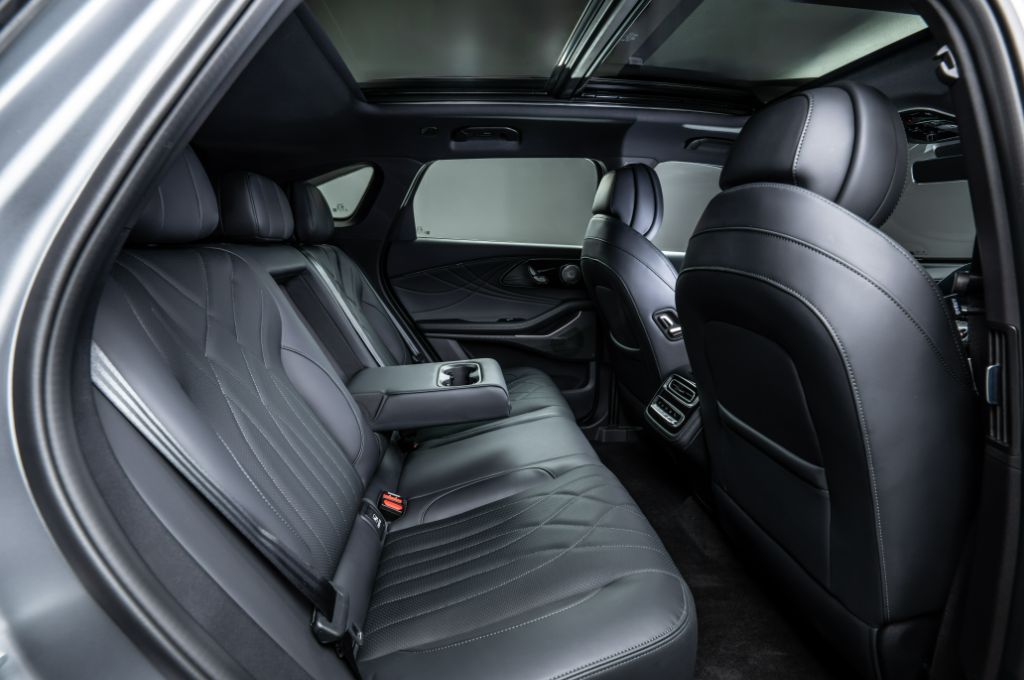
Having said that, the Omoda could be a fantastic company car option, and it’s likely that the monthly deals will become more competitive after the initial launch flurry of activity – so keep your eyes peeled.
And, of course, that electric range means that fuel costs will be among the lowest of any plug-in hybrid, and will be drastically lower than on a comparable non plug-in petrol or diesel cars. If you can charge regularly on an off-peak tariff, you’ll probably barely need to run the petrol engine at all, and you’ll be paying some 3p per mile – rather than the equivalent 16 - 24p per mile for a diesel or petrol car. Even when the petrol engine is running and the battery is too depleted to run in pure EV mode, the Omoda 9 will likely return around 44mpg or more, if our test drive is anything to go b
A seven year, 100,000 mile warranty also bring a lot of peace of mind, as does the fact that the high voltage battery unit is covered for eight years and 100,000 miles.
Verdict
The Omoda 9 plug-in hybrid showcases some seriously impressive tech that should have established European brands worried. That huge electric range is a compelling reason to opt for it over other alternatives, and it’s also a rather lavish-feeling car for the money. Given the PCP monthly rates and a rather underwhelming ride comfort, alternatives like the Kia Sportage and Skoda Kodiaq PHEVs will still make more sense for most retail buyers. But the Omoda 9 is a good car with some class-leading powertrain tech, and it’s the most recommendable car, yet, from the Chinese brand.
Like the Omoda 9? Try these...
Want all the latest electric car news, reviews and videos? Sign up to the Electrifying newsletter, and don't forget to check out the Electrifying podcast.









 CO2: 38g/km
CO2: 38g/km